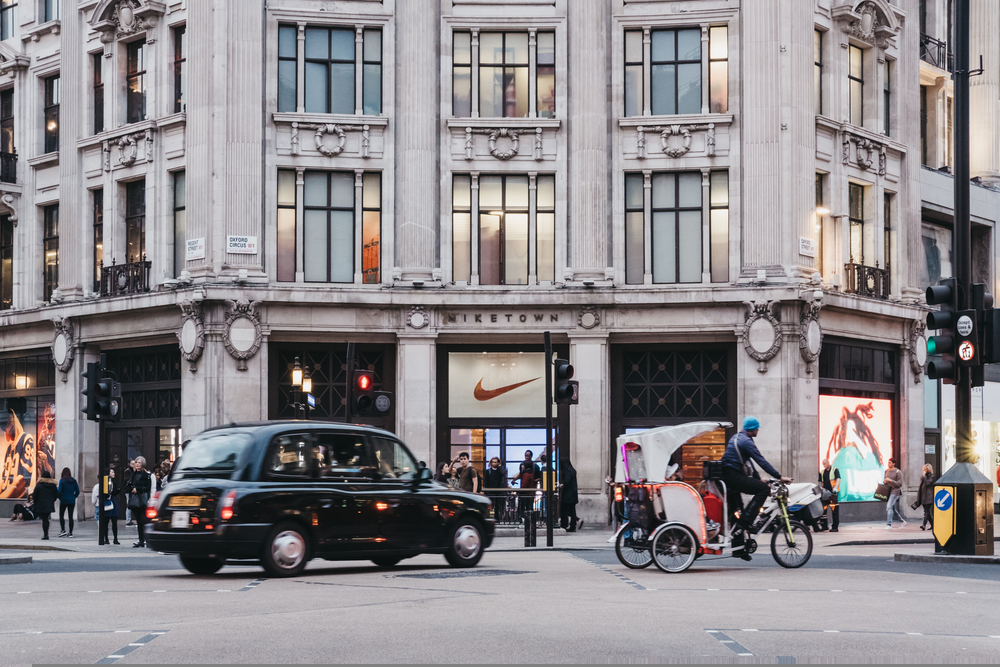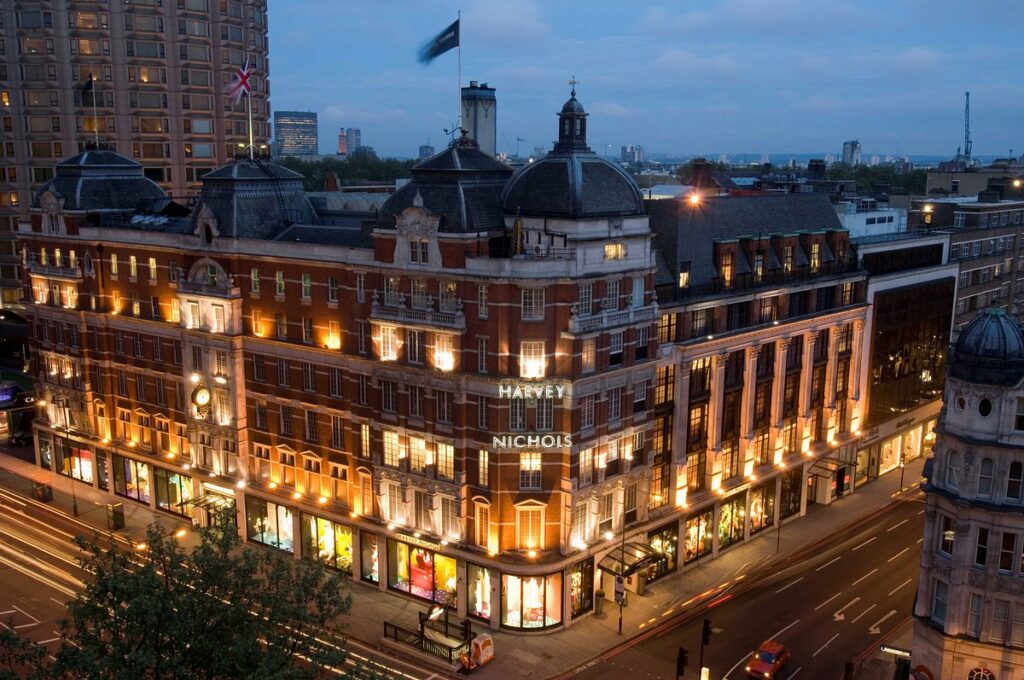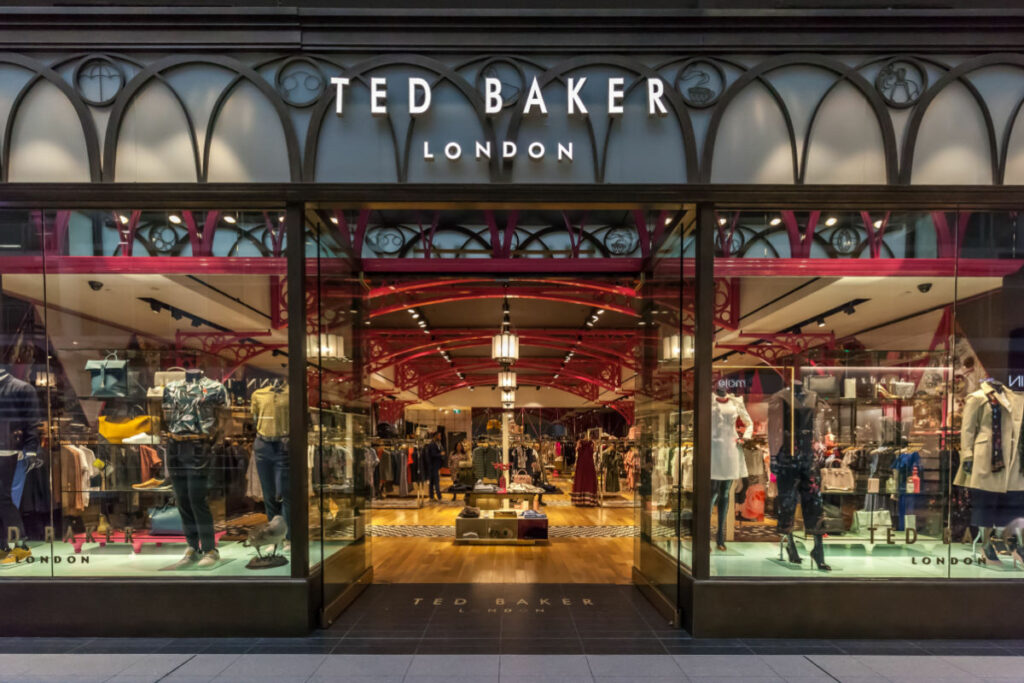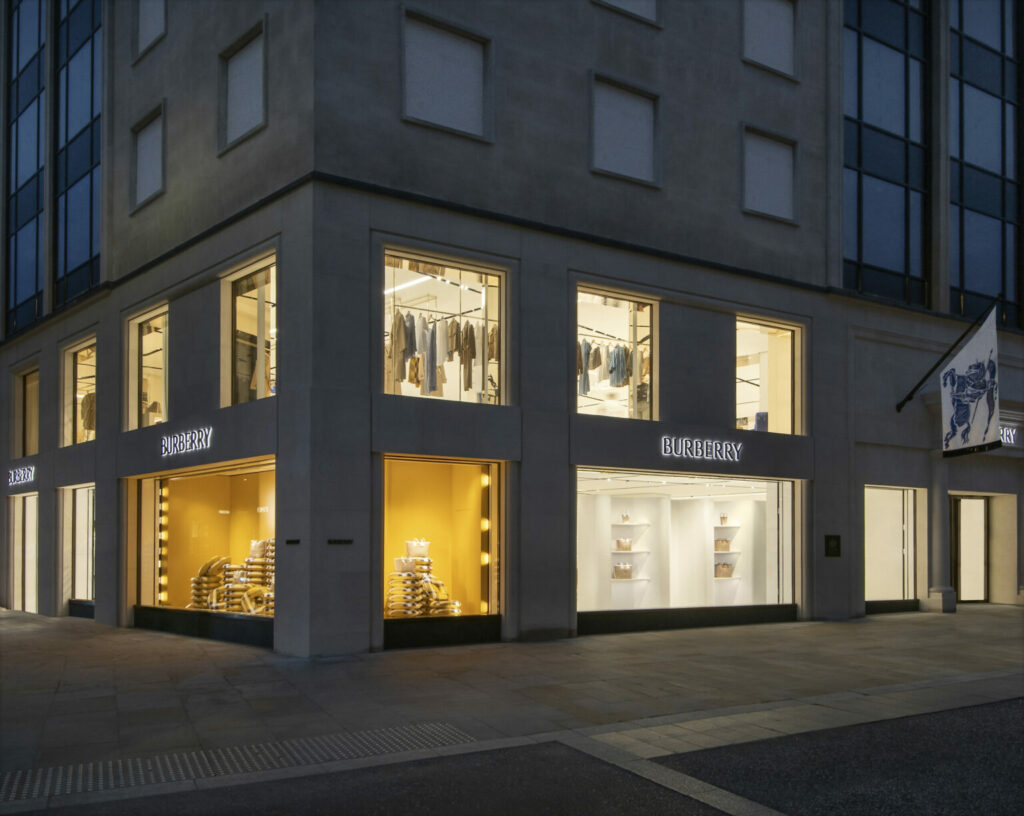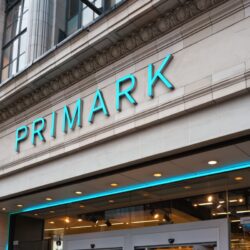From Ikea and HMV on Oxford Street, to The North Face and Joseph on Regent Street, and Burberry and DSquared2 on Bond Street.
There is a throng of new store leases being signed across London’s West End that shows the shopping district has retained its appeal for big brands.
In fact, luxury group Kering agreed a £13m-a-year lease for a new Saint Laurent store on London’s Bond Street in April, which is thought to have set a record rent for the UK.
But with footfall still lagging pre-pandemic levels – The New West End Company data showed that visitor numbers last year dropped 11% on 2019 – and the cost of doing business increasing, how profitable are these new flagships? Is their primary focus brand building or selling product?
A benchmark for success
The holy trinity of streets – Oxford Street, Regent Street and Bond Street – are widely known as a benchmark of success in the industry.
When Gymshark made its physical debut last year with a flagship on Regent Street, it showcased to the public and industry it had officially reached the big league.
Founder and CEO Ben Francis said ahead of its opening: “I keep having to pinch myself that we’re going to have a flagship store on one of the most prestigious streets in the world.”
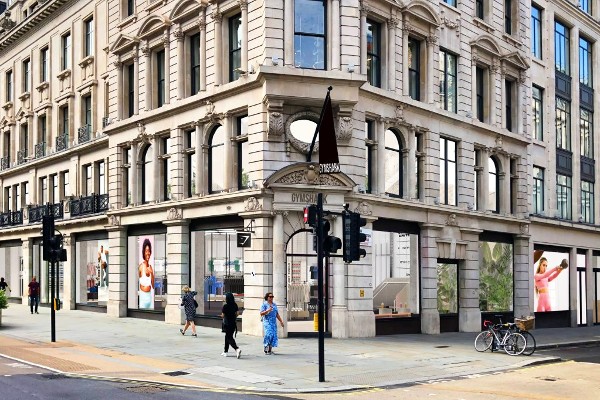
The experience-led store includes a studio space offering free workout classes and a Joe and The Juice café, alongside the opportunity to shop its wide range of fitness apparel and accessories.
Gymshark isn’t the only retailer using its arrival in the shopping district to mark a key milestone.
HMV, which was forced to close its West End store when it plunged into administration in 2018, is reclaiming its flagship at 363 Oxford Street as it nears the end of its rebuilding phase under new owner Doug Putman.
Managing director Phil Halliday says the decision to return was a simple one: “It’s Oxford Street, isn’t it?”
“It’s still probably the busiest retail destination in the UK and therefore, it’s a no brainer really. You’re always gonna have it on the list if you don’t have a store there.”
He adds that “getting back onto the street” marks a key milestone since its collapse: “It’s important to start the next chapter of the business.”

Similarly, Sanjay Vadera, the chief executive of The Fragrance Shop, says the opening of the retailer’s new experiential store on Oxford Street later this summer will be a “defining moment for our business”.
“The launch of a flagship store in one of the world’s most iconic retail locations is a symbol of how far we’ve come,” he adds.
Even Swedish furniture giant Ikea is set to join the roster of brands in the West End, with its highly anticipated store inside the former Topshop unit.
When it comes to flagships in London’s West End, it would be remiss to mention the luxury mecca that is Bond Street.
Attracting the most prestigious and upmarket retailers since the 18th century, the road is the place to be for luxury brands.
“The brand association of a location for luxury is really important,” explain Savills director of retail Sam Foyle.
“The thing you’ve got with London is there aren’t a lot of luxury locations,” he says. “You’ve got Sloane Street, and there isn’t really a lot else so Bond Street is the absolute hub for that.”
That’s why Kering forked out an eye-watering £13m a year lease for a six-storey property on the corner of Bond Street and Grafton Street for YSL’s flagship, surpassing the record set by Ralph Lauren in 2016 when it paid £11m a year.
“We saw a huge bidding war between LVMH and Kering on Bond Street for a site where they went to best bids of 40%+ above quoting rents because it was a key location,” says Foyle.
There is much activity on Bond Street of late, with Burberry reopening its flagship in June after months of refurbishing, and Italian shoemaker Aquazurra opening a second boutique at the top end of the road, less than 300 metres from its Albermarle Street shop.
What does a flagship in London’s West End actually cost?
However, it is not all boom town in the West End. Upmarket department store Fenwick is soon to vacate Bond Street after 130 years to help ensure the business is on “strong financial footing”.
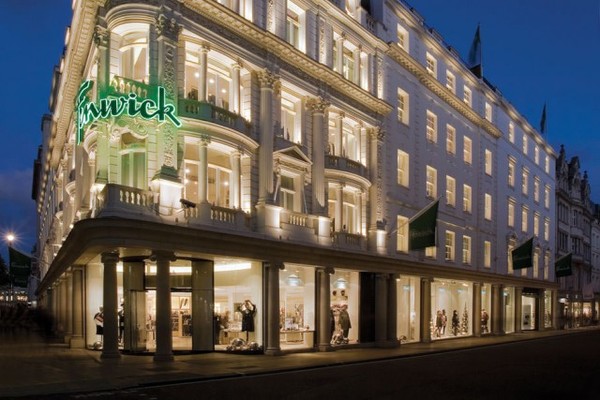
When revealing the closure, chairman Simon Calver said: “Decisions like this are always difficult but it is absolutely the right thing for the business.
“This was about what we need to do to ensure the business is on a really strong financial footing and can survive for another 140 years.”
It is not the only big retailer to pull out of the West End. House of Fraser shut up shop on Oxford Street last year, whilst New Look closed all three branches along the famous shopping street as it restructured its business.
This is because running a flagship store in London’s main shopping district is an expensive business.
Hefty rents are just one side of the story. Retailers have equally staggering business rates. Selfridges, for example, pays £17.4m in rates for its Oxford Street store.
Ex-Debenhams chief executive Steven Cook says the rates on its Oxford Street were higher than its rents.
For many retailers, West End flagships are “never going to be your profit centre”, Cook says as he shares that the Debenhams flagship was “borderline profitable”.
“There was always a lot of debate and a multitude of restructurings over whether we keep it or not.”
In 2019, the retailer moved its head offices into the top floors of the store which Cook says cut costs.
However, the department store’s presence on Oxford Street, which dated back to 1778, came to an abrupt halt in 2021 when the retailer collapsed into administration.
Halliday admits that running HMV “for a little while without a central London flagship has probably been quite healthy” for the business.
“Going straight into an expensive Oxford Street flagship store is quite risky unless you’ve road-tested what you’re doing for a bit,” he says. “We’ve gone from location to location with progressively bigger challenges to turn around.”
Experience or profit?
Operating stores in London’s shopping capital may cost a lot to run, but that’s not to say the spaces don’t generate an equally substantial amount of revenue.
But it’s not just about selling product, Cook says such flagship stores are about “expressing your brand”.
That is why many retailers continue to plough investment into West End flagships.
Ikea paid a whopping £378m alone for the former Topshop unit on Oxford Street. Meanwhile, retailers pour millions into ensuring shop fitouts represent the very best of their brand to London’s shoppers and tourists.
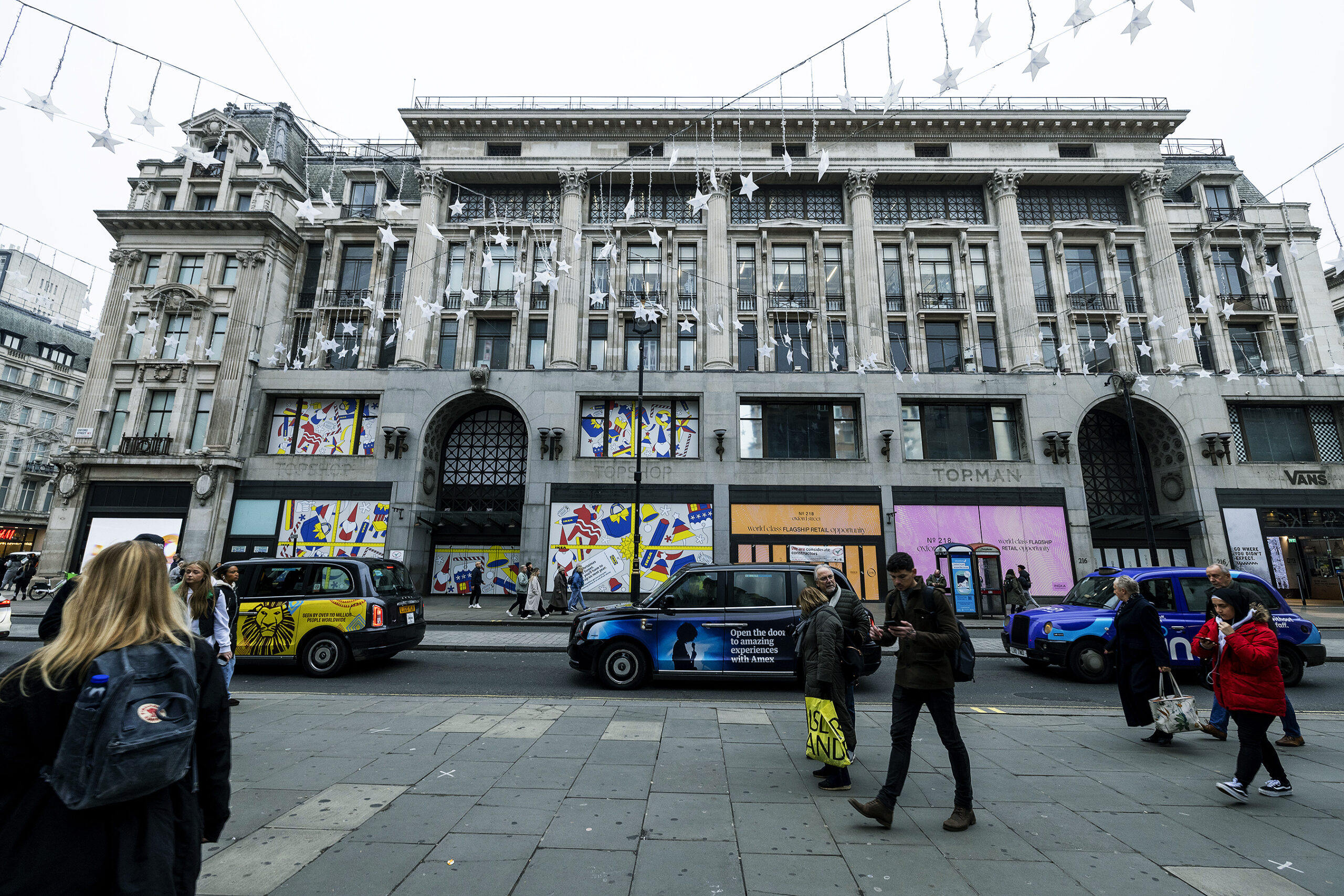
Sports Direct spent £10m refurbishing its Oxford Street flagship in 2021 to “bring to life its new brand direction”.
The upgrade – part of Frasers’ elevation strategy – involved a complete store re-fit, which included introducing digital screens around the shop floor as well as improving customer engagement through gait analysis machines, a bra-finder tool and personalisation stations.
“The store hasn’t just been upgraded, we’re ripping up the rule book and looking at our retail spaces with a completely new vision – this store is a prime example of that,” chief executive Michael Murray said at the time.
However, this isn’t a recent phenomenon. Burberry, which revamped its luxurious Bond Street store late last month, opened its world-beating flagship on Regent Street in 2012.
The 44,000 sq ft Regent Street store, situated in a former art deco cinema, was branded “one of the most architecturally and culturally significant projects we have undertaken” by former chief creative officer Christopher Bailey when it opened.

The fierce amount of investment into these spaces begs the question of just how many retailers in the area that focus on experiential retail are turning a profit?
Foyle says it’s a mixed bag.
“It depends which sort of camp you’re in but I would say predominantly fashion stores opening on Oxford Street are looking to make money,” he says.
“There might be an allocation towards the marketing importance of it, but they’re looking at the store to make money whereas a tech brand or others may well have different reasons to do so.”
Foyle adds that the intention behind the store also “depends on what brand recognition is needed and where it’s at in its evolution”.
Halliday is clear that he expects HMV’s new Oxford Street store to make money and anticipates it will be “the highest performing in terms of turnover”.
Ikea UK and Ireland boss Peter Jelkeby says its Oxford Street flagship is also designed to take money.
“We want to sell there to be clear – and we think we’re going to have good profitable growth in Oxford Street,” he tells Retail Gazette.
However, he believes it will have a wider impact on its brand and will generate online growth too.
He expects many shoppers to use the store as a showroom, and order products online, however he does expect higher frequency “take away” products such as home furnishing accessories to perform well.
“You won’t be able to take all the furniture back home. You will be able to see them, experience them but we need to have good support for home deliveries and collection points,” explains Jelkeby.
Ikea and HMV may be aiming to achieve the traditional KPI of sales and profits, however, some brands are following a different path and are all about experience and immersing customers with the brand.
Adidas’ Oxford Street store, for example, has dedicated the ground floor of its flagship to a multi-purpose space.
The walls of shoes and racks of clothing that typically decorate a sports shop have been replaced with a DJ booth, a gaming area, a personalisation station, and a permanent football exhibition that even includes a metal bust of Ian Wright.
“That ground floor level is all about brand,” says Foyle. “Everything is about the experience of the brand.
“The money that’s been spent on the store and its returns are not about how many pairs of trainers are sold; it’s a brand elevation store.”
Similarly, Microsoft – which opened its 22,000 sq ft flagship in 2019 – “is not on the corner of Oxford Street and Regent Street to really make money,” says Foyle, who insists the store is all about “positioning the brand in the right way”.
“The launch of products, the customer service, the touch and feel; it’s those elements and it will impact their sales online,” he says.
“The tangible profit and loss of that store would be a very hard one for them to manage and really capture. They probably have good data sets in terms of seeing people go into a store before they buy something.”
Frasers Group-owned Flannels is overt about the marketing value of its £10m Oxford Street flagship.
Earlier this year it took the bold step of rebranding the store as Flannels X, shifting the 18,000 sq ft store’s primary function from selling products to acting as a “stage” to broadcast creative ideas.
The move resulted in the ground and lower ground floor being reserved for experiential activations in a bid to attract a younger generation of customers.
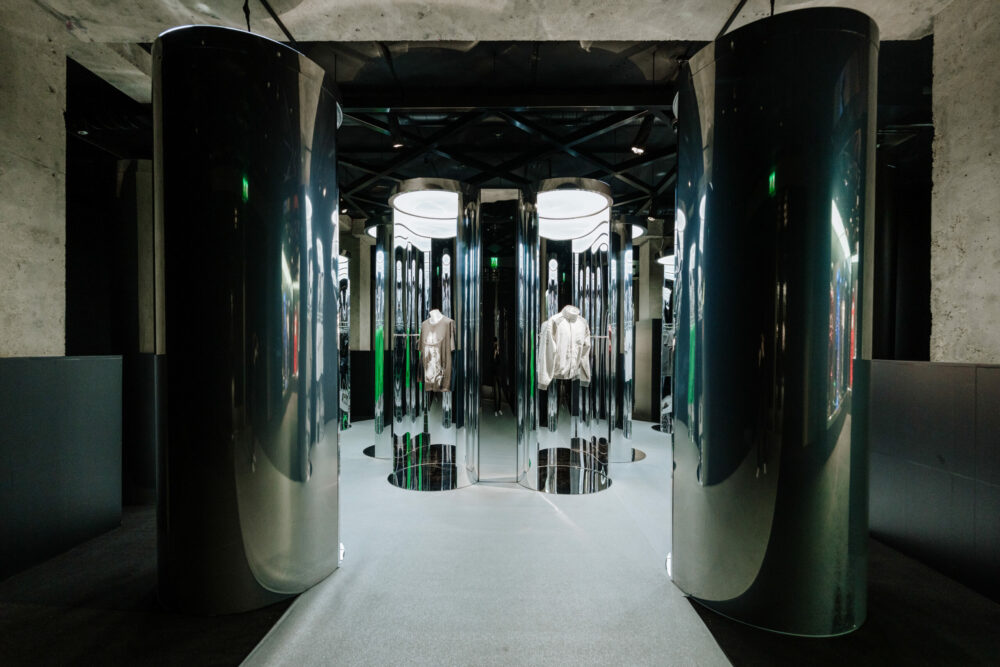
“It’s about creating an environment that is a stage for us to broadcast the Flannels brand,” Frasers group chief marketing officer Beckie Stanion told Vogue Business earlier this year.
“I’m a firm believer that retailers need to behave like brands. That means thinking like a platform, not like a retailer. That’s the change in our North Star. We are serving our consumers and brands in a way that we haven’t done before.”
The Flannels X store transformed into the Renaissance flagship at the start of last month to celebrate Beyoncé’s latest album as she played in London’s Tottenham Hotspur stadium.
The retailer converted its ground floor into a temporary exhibition space, selling limited edition Beyoncé merchandise, while the lower ground floor shifted into something akin to a nightclub that played the artist’s latest album on repeat.
When Retail Gazette took a trip to the Renaissance flagship queues circled the block.
But why are an increasing number of retailers primarily using their spaces for marketing purposes?
Property analyst Jonathan De Mello says: “It’s very expensive to advertise online and [it’s harder] to stand out from the crowd, whereas the physical store has a permanency about it.”
“Even if shoppers just see the fascia, they may go back home and shop online. It’s all about brand recognition,” he says, adding that retailers “do want to make money from the store too”.
“It’s about that happy medium. If it doesn’t make huge amounts of profits then it needs to create some sort of an equity.”
Jelkeby expects a halo effect from its Oxford Circus opening and predicts it will generate interest in online.
“You open a physical space, and you also see online grow. If you take that same reasoning into Oxford Street, you have even more interest,” he says.
De Mello agrees that the halo effect is much larger in London’s West End, which was named as the top retail location for brand power in the UK by his property firm JDM Retail.
It’s clear that some global brands agree and are prepared to pay eye-watering sums for that kind of exposure.
Hopefully the raft of new brands putting themselves in the shop window can help bring more shoppers back to the West End.

